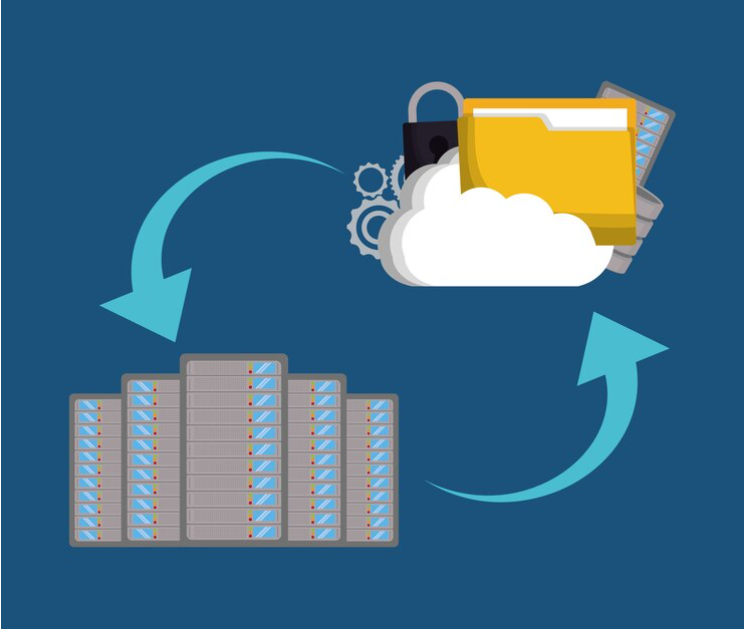Migration Services
Introduction of System Migration
In the ever-evolving realm of technology, businesses are constantly faced with the challenge of staying relevant and competitive. System migration, the process of moving from one technology or platform to another, has emerged as a strategic imperative for organisations seeking to embrace innovation, enhance efficiency, and adapt to changing market dynamics. This article delves into the world of system migration, exploring its significance, benefits, challenges, and best practices.
The Significance of System Migration
As businesses grow, so do their technology needs. Legacy systems that were once cutting-edge may now hinder progress due to compatibility issues, limited scalability, and security vulnerabilities. System migration offers a solution to this conundrum, enabling organisations to transition from outdated technologies to modern solutions that align with their current and future goals.
Benefits of System Migration
- Enhanced Performance: Modern systems are designed to be more efficient and responsive, leading to improved productivity and customer satisfaction.
- Cost Efficiency: Migration can help reduce maintenance costs associated with outdated systems, leading to potential long-term savings.
- Scalability: Modern platforms offer the flexibility to scale resources as needed, accommodating business growth and fluctuations in demand.
- Innovation Enablement: New technologies often come with advanced features and capabilities, allowing organisations to innovate and offer better products or services.
- Security Enhancements: Legacy systems may have security vulnerabilities that can be mitigated by migrating to more secure platforms.
Challenges of System Migration
- Data Migration: Ensuring seamless and accurate transfer of data from the old system to the new one without data loss or corruption.
- Integration Complexity: Integrating the new system with existing applications and databases can be intricate and time-consuming.
- Business Disruption: Migrating systems can disrupt day-to-day operations if not planned and executed meticulously.
- User Training: Employees need to be trained on the new system to ensure smooth adoption and minimal downtime.
- Risk Management: Migrating critical systems involves risks such as data breaches, downtime, and performance issues, requiring careful risk mitigation strategies.
Best Practices for Successful System Migration
- Thorough Planning: Develop a comprehensive migration strategy that outlines goals, timelines, resources, and potential challenges.
- Assessment and Analysis: Conduct a detailed analysis of the current system to identify dependencies, functionality, and potential roadblocks.
- Testing and Validation: Rigorously test the new system in a controlled environment before full deployment to mitigate unforeseen issues.
- Data Backup and Recovery: Implement robust data backup and recovery mechanisms to safeguard against data loss during migration.
- Change Management: Involve stakeholders and communicate the migration plan to ensure smooth adoption and minimise resistance.
- Expert Consultation: Engage experienced migration specialists who understand the intricacies of the process and can provide tailored solutions.
Our Migration Services Include :
1. COBOL Application Assessment and Analysis:
COBOL has been a workhorse for many businesses, powering critical applications for decades. However, with the pace of technological advancement, assessing the relevance, performance, and potential bottlenecks of COBOL applications is essential. Our COBOL Application Assessment and Analysis service involves a comprehensive evaluation of your existing COBOL applications.
Key Components:
- Functional Analysis: We dissect your COBOL applications to understand their functionalities, business logic, and interdependencies.
- Performance Evaluation: Our experts assess the performance of your COBOL applications to identify any bottlenecks that might be affecting efficiency.
- Compatibility Check: We analyse how well your COBOL applications align with modern platforms, technologies, and integration requirements.
Benefits:
- Informed Decision-Making: A clear understanding of your COBOL applications’ strengths, weaknesses, and compatibility helps you make informed decisions about their future.
- Optimised Performance: By identifying and addressing performance issues, we ensure your COBOL applications operate at peak efficiency.
- Migration Strategy: The assessment serves as a foundation for devising a migration strategy that minimises disruption and maximises benefits.
2. COBOL to Modern Language Migration:
Transitioning from COBOL to a modern programming language is a strategic move to unlock enhanced capabilities, maintainability, and compatibility with contemporary systems. Our COBOL to Modern Language Migration service facilitates a seamless transition, ensuring your applications remain functional and efficient in a rapidly evolving landscape.
Key Steps:
- Language Selection: We collaborate to choose a suitable modern programming language based on your business needs and future goals.
- Code Refactoring: Our experts meticulously refactor COBOL code, translating it into the chosen modern language while preserving functionalities.
- Data Migration: Secure and accurate migration of data from COBOL-based databases to the new environment is ensured.
Benefits:
- Innovation Potential: Modern languages enable integration with newer technologies, opening doors to innovation and competitive advantage.
- Scalability: The new language equips your applications for scalability and future growth, adapting to changing business requirements.
- Reduced Risk: A well-executed migration minimises disruptions, data loss, and compatibility issues.
3. Legacy System Replacement:
Outdated systems can hold back growth and efficiency. Our Legacy System Replacement service helps you smoothly transition from old, inefficient systems to modern solutions tailored to your needs.
Key Components:
- Evaluation: We assess your existing system’s shortcomings and explore replacement options, considering off-the-shelf software or custom solutions.
- Minimal Disruption: Our experts develop a transition plan that minimises disruption to ongoing operations during the replacement process.
- Data Migration: Secure transfer of critical data from the legacy system to the new environment is a priority.
Benefits:
- Enhanced Efficiency: Modern systems are designed for efficiency, streamlining workflows and processes.
- Adaptability: The new system can be tailored to your specific requirements, adapting to your business’s unique needs.
- Future-Readiness: Replacing legacy systems ensures your organisation is equipped to handle future challenges and technological advancements.
4. Legacy System Modernisation:
Modernising legacy systems is often more cost-effective than complete replacement. Our Legacy System Modernisation service revitalises existing systems, aligning them with current business needs.
Key Steps:
- User Experience Enhancement: We update user interfaces and experiences, making the system more intuitive and user-friendly.
- Functionality Upgrades: Legacy functionalities are upgraded to meet contemporary business requirements.
- Integration: The modernised system is integrated with other applications, creating a cohesive digital ecosystem.
Benefits:
- Cost Savings: Modernisation is often more cost-effective than a complete replacement, extending the lifespan of your investment.
- Preserved Investment: The value of past investments in the legacy system is retained while improving its capabilities.
- Improved Productivity: A modernised system leads to improved user experience and productivity.
5. Cloud Migration:
Transitioning to the cloud offers agility, scalability, and cost-efficiency. Our Cloud Migration service helps you harness the power of cloud computing while ensuring security and data integrity.
Key Steps:
- Cloud Strategy: We work with you to develop a tailored cloud migration strategy, considering public, private, or hybrid cloud solutions.
- Data Migration: Your data is securely migrated to the cloud environment while ensuring minimal disruption.
- Security Measures: Robust security protocols are implemented to protect sensitive data in the cloud.
Benefits:
- Scalability: Cloud platforms offer the ability to scale resources as your business demands change.
- Cost Efficiency: Cloud migration often leads to reduced infrastructure and maintenance costs.
- Global Accessibility: Cloud-based systems can be accessed from anywhere, enabling remote work and collaboration.
In embracing these services, you’re not just migrating systems; you’re modernising your technological landscape, empowering your business for a more efficient, innovative, and agile future.
Why Trust Us?
- Expertise: Our team boasts in-depth knowledge and experience in diverse migration scenarios, ensuring a well-rounded approach to your unique challenges.
- Customisation: We recognise that no two migrations are the same. Our services are tailored to your specific needs, enabling a truly customised migration experience.
- Risk Mitigation: With meticulous planning and rigorous testing, we mitigate potential risks, ensuring minimal disruptions and data integrity throughout the migration journey.
- Future-Ready Solutions: Our migration strategies don’t just address current needs; they equip you for the future, positioning your organisation to thrive in an ever-evolving technological landscape.
- Client-Centric Approach: Your success is our priority. We collaborate closely with you, keeping you informed at every step, and ensuring your vision and goals are at the heart of our migration process.
Frequently Asked Questions (FAQ) about System Migration Services
What is system migration?
System migration refers to the process of moving from one technology, platform, or environment to another. It often involves transitioning from legacy systems to modern solutions to improve efficiency, scalability, and compatibility.
Why should I consider system migration?
System migration offers numerous benefits, including enhanced performance, reduced costs, scalability, improved security, and the ability to leverage modern technologies for innovation.
What is COBOL Application Assessment and Analysis?
COBOL Application Assessment and Analysis involves evaluating existing COBOL applications to understand their functionalities, performance, and compatibility with modern platforms. This assessment helps in making informed decisions about the future of these applications.
How does COBOL to Modern Language Migration work?
COBOL to Modern Language Migration involves translating COBOL code into a modern programming language while preserving the functionalities. This transition enables better compatibility, scalability, and innovation potential.
What is Legacy System Replacement?
Legacy System Replacement involves replacing outdated systems with modern solutions. It aims to enhance efficiency, align systems with current business needs, and future-proof the organisation’s technology infrastructure.
What is Legacy System Modernisation?
Legacy System Modernisation refers to upgrading and improving existing legacy systems to align with current business requirements. This process often involves enhancing user experiences, upgrading functionalities, and integrating the system with modern technologies.
What is Cloud Migration?
Cloud Migration is the process of moving applications, data, and services from on-premises infrastructure to cloud-based platforms. This transition offers benefits such as scalability, cost savings, accessibility, and improved collaboration.
How does Cloud Migration ensure data security?
Cloud Migration includes implementing robust security measures, such as encryption, access controls, and monitoring, to safeguard sensitive data in the cloud environment.
How can I ensure a successful system migration?
Successful system migration requires thorough planning, expert consultation, thorough testing, change management strategies, and data backup and recovery plans. Adhering to best practices minimises risks and disruptions.
Can system migration be done without disrupting operations?
Yes, with careful planning and execution, system migration can be carried out with minimal disruption to ongoing operations. Strategies like phased migration and thorough testing contribute to this goal.
What are the potential challenges in system migration?
Challenges in system migration include data migration issues, integration complexities, business disruption, user training, and risk management. Addressing these challenges through proper planning and expert guidance is crucial.
How do I choose the right migration service for my business?
Select a migration service based on your business needs, goals, and the specific challenges you’re facing. Consultation with experts can help you determine which service aligns best with your requirements.
How long does a typical system migration process take?
The duration of a system migration process varies based on factors like the complexity of the migration, the size of the system, and the extent of data to be transferred. A well-planned migration can take weeks to months.
Can system migration lead to data loss?
A well-executed migration process with robust data backup and recovery measures minimises the risk of data loss. Thorough testing and validation help ensure the integrity of migrated data.
How can I get started with system migration services?
To get started with system migration services, reach out to our experts for a consultation. We’ll assess your current situation, understand your goals, and provide tailored recommendations for a successful migration journey


